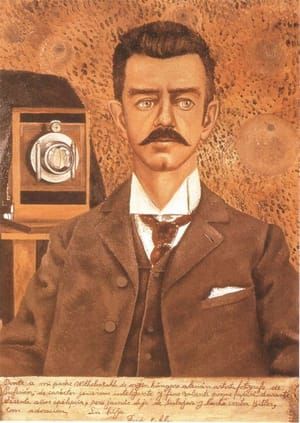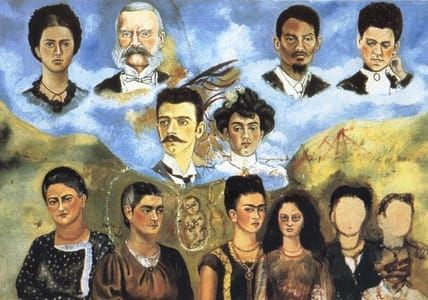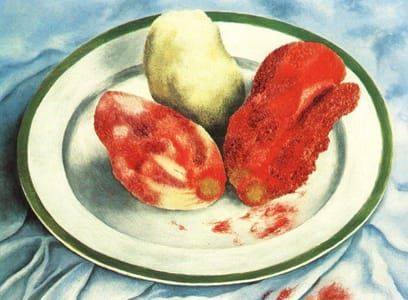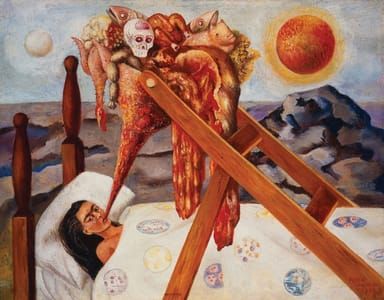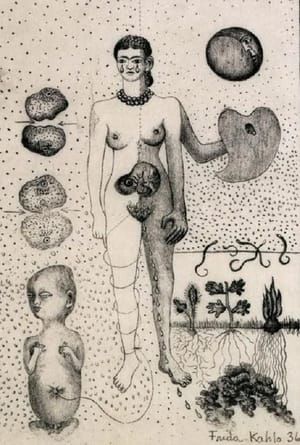
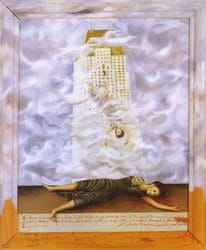
El Suicidio De Dorothy Hale (The Suicide Of Dorothy Hale), 1938
Frida Kahlo
This is one of Frida's most shocking and controversial paintings. Frida painted it in the style of an "ex-voto (retablo)". The unfortunate victim in this painting is Dorothy Hale, actress and Ziegfeld showgirl. Hale's life suddenly took a turn for the worse when her husband was killed in an automobile accident. Her Hollywood career was failing, she was in severe financial trouble, and, in the end was living on charity from friends. On October 21 of 1938, wearing her favorite black dress and a corsage of small yellow roses, she jumped to her death from the top window of her luxury high-rise apartment suite.
Clare Boothe Luce, publisher of the fashion magazine Vanity Fair, commissioned Frida to paint a portrait of her long time friend, Dorothy. The portrait was to be a gift to Dorothy's grieving mother. Frida suggested a "recuerdo" (remembrance) style painting. Although Clare didn't really understand what that was all about, she nonetheless agreed. What Kahlo created was a graphic, narrative "Ex-Voto", detailing every step of Hale's suicide, placing the corpse at the bottom on a stage-like platform in the foreground. At the bottom, blood red lettering details the tragic event:
"In New York City on the 21st of October 1938, at 6:00 in the morning, Dorothy Hale committed suicide by throwing herself from a very high window in the Hampshire House. In her memory [...], this retablo was executed by Frida Kahlo."
When Boothe received the painting she was horrified at what she saw. She was expecting a "portrait" of Dorothy….not a pictorial reenactment of her suicide….and certainly inappropriate as a gift to Dorothy's mother. Her immediate reaction was to destroy the painting but friends convinced her not to. At Clare's request, part of the third line of text that once read "painted at the request of Clare Boothe Luce, for the mother of Dorothy" has been painted over. Another part of the painting was also changed: an angel that once appeared at the top was removed.
At the time this was painted, Frida was separated from Diego and was having her own thoughts about suicide. This painting may be a reflection Frida's compassion for women who are driven to despair by male desertion.
Clare gave the painting to her friend Frank Crowninshield. After Crowninshield's death, it was returned by his son and was not seen for decades. It mysteriously appeared one day at the front door of the Phoenix Art Museum where it is currently on display.
[http://www.fridakahlofans.com/c0260.html]
23 x 19 in
Uploaded on Jan 7, 2018 by Suzan Hamer
Frida Kahlo
artistArthur
Wait what?

